What Si The Most Un Healthiest Makeup Product
Are you using safer cosmetics? Navigating the beauty industry and finding safe products are very catchy. Today's investigation is all about safer makeup. You've trusted Mamavation to bring yous topics like best & worst deodorants, all-time & worst confront washes & moisturizers, safest & most toxic pilus color brands, now join us as nosotros take you lot through the makeup aisle, explain what to avoid and which brands are the safest.
This article has been fact-checked and researched by Rebecca Elizabeth Sherrick Harks, RN, BSN. It contains chapter links.

What You lot Need to Know About Makeup Earlier You Purchase
I've got some bad news for you. The corrective manufacture is corrupt and putting us all in danger. Every bit I've discussed in Green Enough: Eat Better, Live Cleaner, Be Happier (All Without Driving Your Family Crazy!), in that location is no government agency continuing between your family unit and the unsafe cosmetic ingredients that can detect their fashion into that bottle of shampoo with a picture of your child's favorite character.
The United States treats chemicals innocent until proven guilty, which is great for business organization only bad for public wellness.
Compare this with the European Union and their procedures, information technology'southward apparent that the The states is lagging way behind keeping consumers condom.The European Union forces companies to "prove" their chemicals are safe before they are immune into commerce. And the differences are vast when applied.
Whereas the European Spousal relationship has banned or restricted more than than 1,400 ingredients from utilise in cosmetics, the The states FDA has but prohibited viii ingredients.
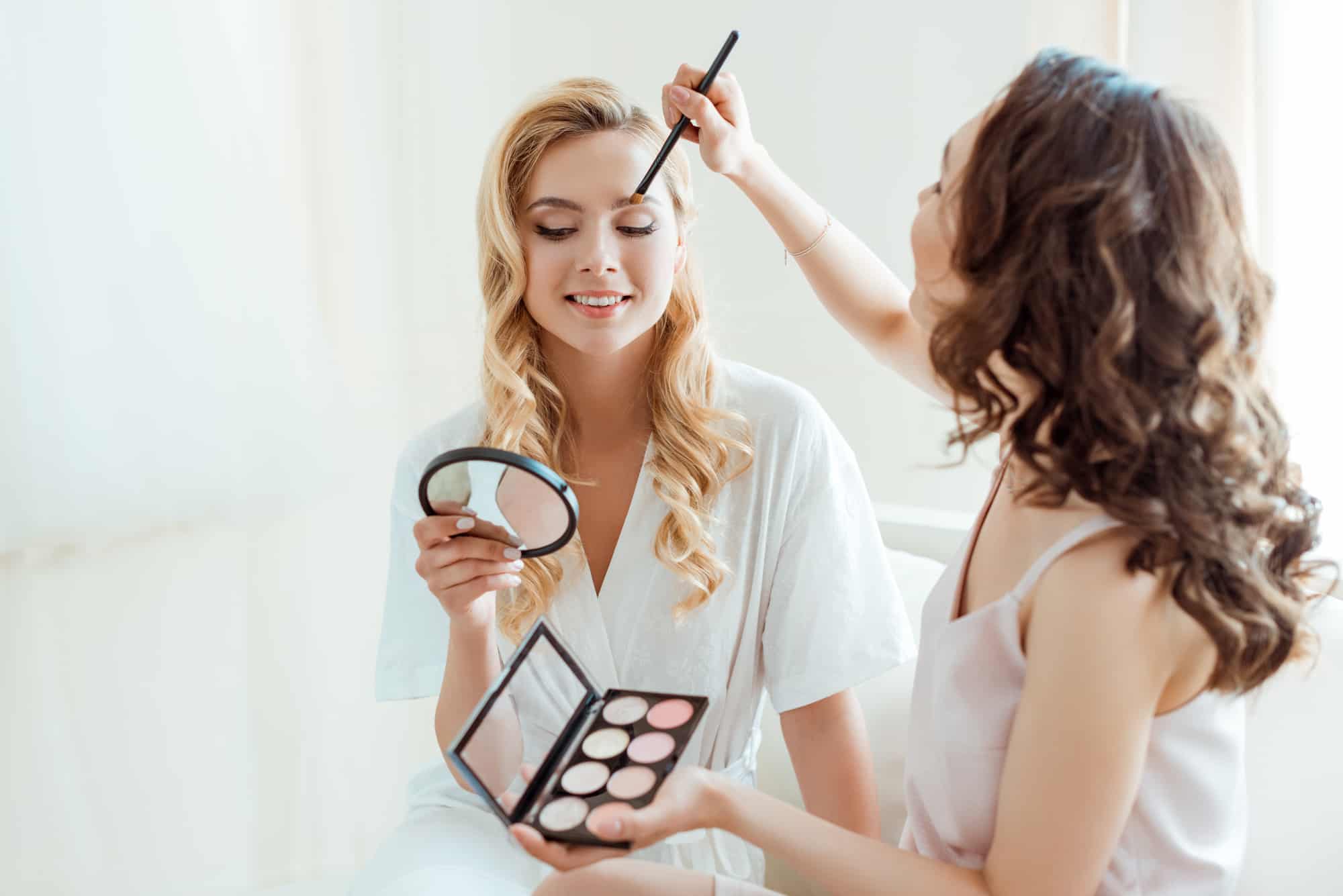
Unsafe Makeup Myths That May Cause Y'all Damage If Yous Believe Them Blindly
Myth #1: Going with natural and/or organic products is your safest bet.
Unfortunate Truth:
There is no definition of "natural" or "organic" when it comes to makeup. Just considering a production is labeled natural/and organic, doesn't mean that the cosmetic doesn't comprise synthetic chemicals. Natural is a buzzword these days, and it's important to know that "natural" has very little meaning beyond advertisement; the FDA even tried dorsum in 1998 to establish an official term for "natural," but nothing was ever washed virtually it. Beingness "organic" doesn't mean anything either unless you see the USDA organic seal.
Natural makeup could as well contain contaminants like PFAS "forever chemicals" as we found in our latest green dazzler cosmetic guide & investigation.
Myth #2: Makeup products stating that they're "hypoallergenic" are much safer for you and your children to use.
Unfortunate Truth:
Every bit we learned in most of our children's product investigations, nearly of the marketing claims, including "hypoallergenic" are unregulated, which means that manufacturers are able to merits all kinds of things that mean nothing at all. These claims have been designed by major marketing boards to instill consumer confidence so they tin sell more products, NOT make you lot safer.
Myth #3: The FDA acts promptly to recall whatsoever blazon of cosmetic (or other) ingredients that crusade harm.
Unfortunate Truth:
Equally we learned in the children's supplements investigation, the FDA is slow to remove ingredients that children ingest, so you lot'd imagine that makeup is even more difficult. What's even uglier is the fact that the FDA has no existent power to regulate the cosmetic industry at all when things go wrong, and then you are basically left to your own defenses at the peril of marketers that want you to purchase more.
- Manufacturers don't have to report any injuries or issues to the FDA
- The FDA has no right to pull makeup products off the market,
- The FDA relies on the makeup conglomerates to self-study any safe bug with their products voluntarily
Myth #iv: You lot can read the label on your makeup and then you tin avoid hazardous chemicals.
Unfortunate Truth:
Unfortunately, corrective ingredients are purposely not transparent. The laws in the US allow companies to omit ingredients that are problematic to human being health, like the ingredients inside fragrance. When you see "fragrance" on the canteen it means the company has decided to leave yous in the dark about what makes up that fragrance. And legally, it can contain over 3,000 chemicals, which don't have to be alleged. None of those chemicals are required to be on the label considering lobbying efforts have focused on protecting the formulation of a product and calling them "proprietary" even though modern technology tin can reverse engineer every ingredient inside the bottle to find out. Therefore, companies tin easily steal each other's formulations by using a laboratory. So when a company refuses to be 100% transparent well-nigh their ingredients, information technology'south not near protecting their formulation, information technology'due south about refusing to be transparent.
Cosmetic manufacturers likewise practice not need to tell you lot most potential contamination, such as PFAS "forever chemicals" found in green beauty makeup.
Myth #5: Considering cosmetics are applied to the skin and not taken orally, they rarely get into your body. And fifty-fifty if they do, the levels of bad-for-you chemicals are and so low that it doesn't affair.
Unfortunate Truth:
Exposure to cosmetics comes in many forms: breathing in powder, for example, swallowing $.25 of lipstick, and almost probable, absorbing cosmetic ingredients through the largest organ in your trunk – your peel. Studies have found that ingredients like paraben, preservatives, triclosan, PFAS, and a whole mess of others are often found in the bodies of people of all ages. The enhancers that the manufacture uses oftentimes allows these (and many other nasty ingredients) to penetrate even further into the depths of the skin.
Another important bespeak is many of these chemicals disrupt hormones, and those types of chemicals are linked to damage at very very pocket-sized amounts like to a drop in an Olympic-sized pool. And what makes manners worse is hormone-disrupting chemicals are non tested at low levels. They test the chemicals at high levels and assume what will happen at low levels without always doing the studies. Merely genes switch on and off at different parts of the dose-response curve, so the effects are not possible to predict. Therefore, arguing the levels are too low to harm are not backed by science. In fact, the American University of Pediatrics has been lobbying Congress and federal agencies for years virtually hormone-disrupting chemicals and their affect on public health. Saying the levels are likewise low to harm is simply incorrect.
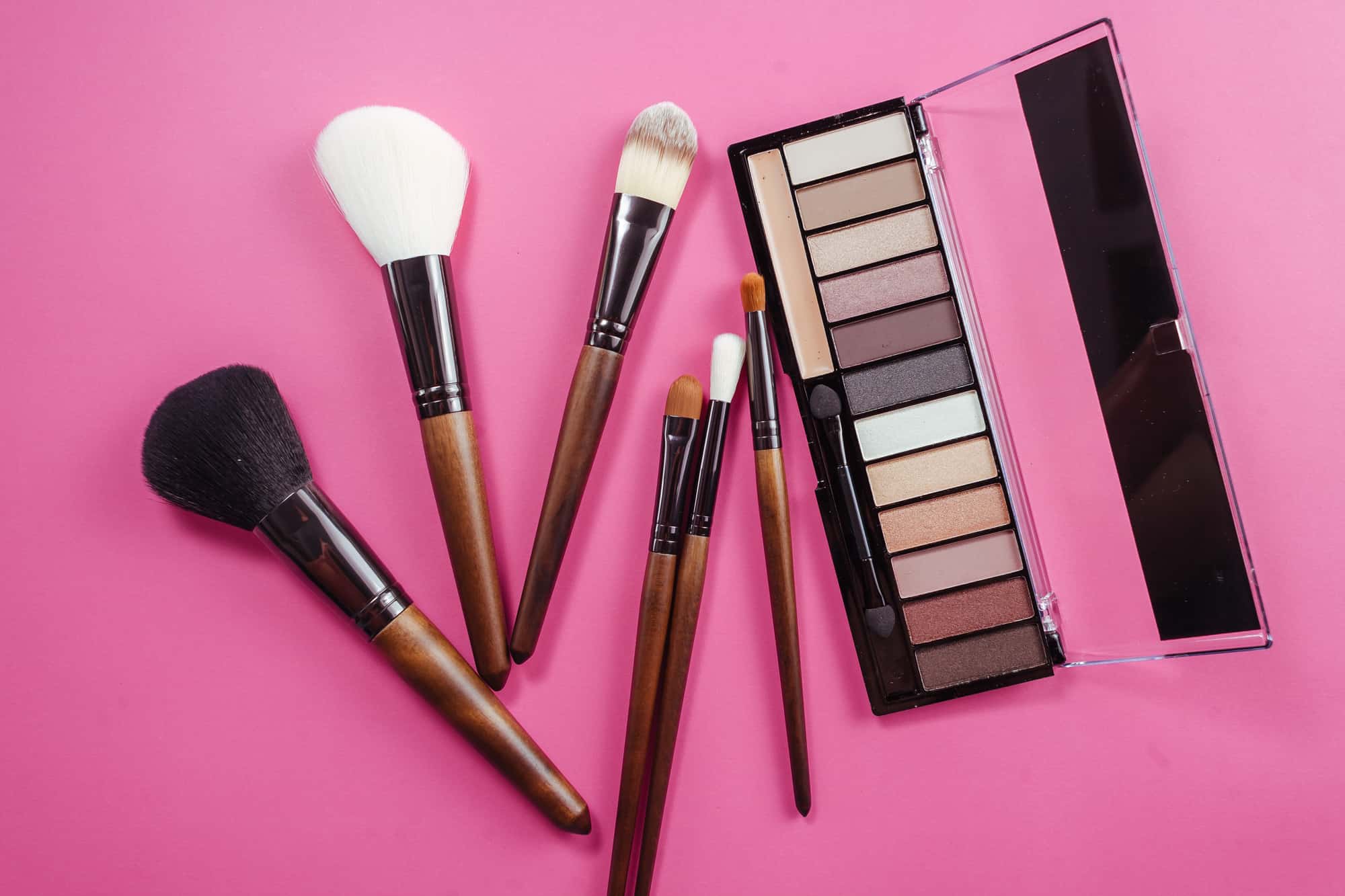
Regulation Of The Cosmetics Industry (Or Lack Thereof )
The largest tendency in the makeup industry today is going "make clean." This Clean Motion for cosmetics has begun due to the frustration and disgust with regulatory oversight and companies' reliance on cheaper hormone-disrupting chemicals.
Run into, way dorsum in 1938, the FDA passed an act called the Federal Food, Drug, and Cosmetic Act, which gave the FDA authority to oversee the prophylactic of nutrient, medical devices, drugs, and cosmetics.
The act actually lists out some pretty clear definitions and penalizations, but hither's the problem–The FDA doesn't actually do any of that. Instead, they've passed the buck onto a grouping (with no power) chosen the Cosmetic Ingredient Review about 30 years ago. These guys are basically people that work inside the industry. And in those xxx years, they haven't really done much either.
- They've only deemed xi ingredients or chemical groups to be unsafe. (Compared with over 1,300 in Europe)
- Aligned themselves with the big cosmetic companies
- Their recommendations on restricting ingredients are not binding on companies, significant no one gets in trouble when they use these ingredients or chemic groups.
Problematic ingredients typically autumn into three categories: endocrine disruptors, carcinogens, and irritants and allergens.
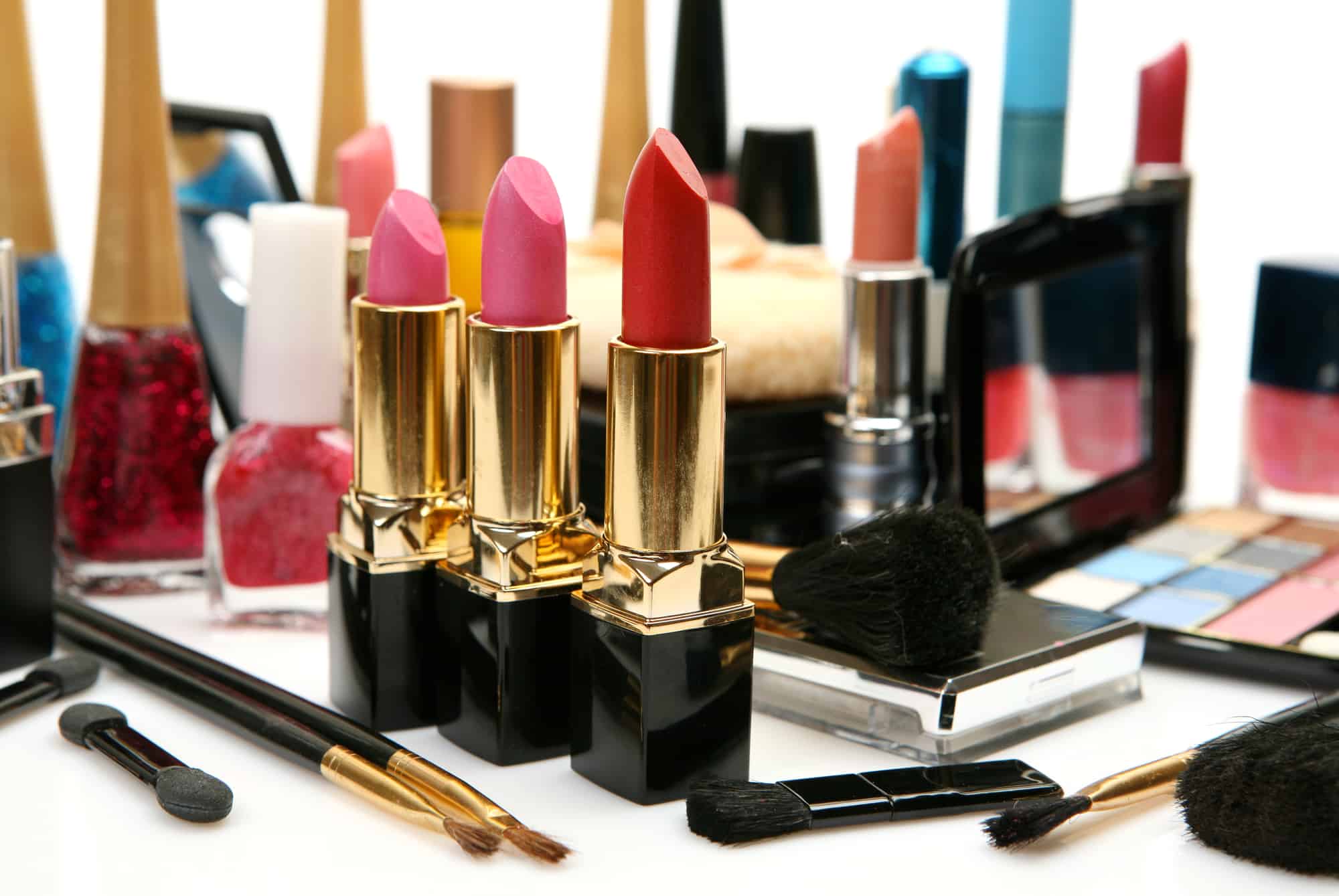
Problematic Endocrine Disruptors Within Cosmetics
What? These are chemicals, substances, and compounds that may imitate our body'south natural hormones, thus interfering with our body's normal, natural chemic signaling.
Ingredients on the Label: Triclosan and triclocarban, toluene, resorcinol, petroleum distillates, butylated hydroxyanisole (BHA), boric acrid, sodium borate, phthalates, placenta extract, & parabens.
Scientific discipline Says: While many of the studies involving these compounds did testify a direct correlation between their apply and hormonal dysregulation, about of these are performed in animals and at higher doses than a person would generally exist exposed to as cosmetics. This is very problematic because unlike genes get turned on and off at dissimilar parts of the dose-response curve. (More on that hither and hither.) What happens at low doses tin exist just the opposite of what happens at high doses, merely in that location have been several studies on humans showing an increment in these chemicals in our body and issues with hormone disruption at very low levels.
- Retinol (Vitamin A): Overexposure to this naturally occurring substance can have reproductive and evolution effects, and has been linked to skin tumors and lesions. Because it is found in foundation, lipstick, moisturizers, cleansers and anti-crumbling products, likewise every bit foods rich in this vitamin, your exposure tin be high without your realizing it.
- Phthalates: These are linked to breast cancer and are endocrine disrupters. These tin can be plant in smash shine and synthetic fragrances, including those that are added to other cosmetics. Smash polish can incorporate a type of chosen dibutyl phthalate, a reproductive and developmental toxin.
- Parabens: These are linked to breast cancer and are endocrine disrupters. Found in creams and lotions, and some makeup.
- Octinoxate: This chemical is likely constitute in foundations and is linked to endocrine disruption and thyroid disorders.
- Siloxanes: This ingredient is used in cosmetics to soften, shine, and moisten things into your pare. They are disruptive to the endocrine arrangement and reproductive system. Look for ingredients that end in -siloxane or -methicone.
Problematic Carcinogens Inside Cosmetics
What? These are compounds, substances, and chemicals that may lead to cancer.
Ingredients on the Characterization: Sodium laureth sulfate (SLS), PEG compounds, & chemicals catastrophe in -eth are all potentially contaminated with i,4-dioxane. Formaldehyde, coal tar ingredients, petroleum distillates, (-methyl, -propy, -caprylic, such as propylene glycol), & Mineral oil.
Science Says:
- Formaldehyde (quaternium-15 and other formaldehyde-releasing preservatives): This is a large one. Information technology'due south been labeled as a potential carcinogen by the National Cancer Establish says its use and exposure to it has been linked to cancer germination in both animals and humans. If you're not swayed past that, you should know that formaldehyde ranks among the top x about common contact allergens. Look for DMDM hydantoin, BHUT (butylated hydroxytoluene), bronopol, diazolidinyl urea, sodium hydrozymethylglycinate, imidazolidinyl urea, methenamine, quarternium-fifteen, Quaternium-18, & Quaternium-26.
- Petroleum-based (-methyl, -propy, -caprylic, such every bit propylene glycol) and mineral oil products: Petroleum jelly comes from residual that builds up on the outside of oil rigs. It is nerveless, distilled and refined and used in many cosmetics such as lip-gloss. While many call these products safe, the toxicity depends on the refinement process, which is currently unregulated, and lower quality refined oil may be linked to chest cancer. Yous desire to avert liquid products with "shine" or make certain they are petroleum-free. You can find these ingredients in mascara, perfume, foundation and lipstick /gloss/lotion. "White petroleum" however is safe
- PEG compounds: Polyethylene glycols, or PEGs, are petroleum-based compounds used to thicken & soften cosmetics. They are very common in foam-based products. The number next to PEG indicates how many units of ethylene glycol they comprise and the lower the number, the quicker it absorbs into your skin. They are problematic because they are frequently contaminated with ethylene oxide and 1,iv-dioxane.
- Vinyl chloride Tin can cause acute toxicity, manifested by dizziness, headache, disorientation, and unconsciousness where inhaled at high concentrations. Studies too demonstrate potential carcinogenic effects. Establish in cosmetic aerosol products including hair sprays
- Zirconium-containing complexes Zirconium-containing complexes accept been used as an ingredient in cosmetics, for example, aerosol antiperspirants. Prove suggests that certain zirconium compounds have acquired human skin granulomas and toxic furnishings in the lungs and other organs of experimental animals
- Chloroform has been used as an ingredient in cosmetic products. Recent information may acquaintance chloroform with carcinogenic furnishings.
- Polycyclic effluvious hydrocarbons (PAHs): Derived from coal, some detect their mode into cosmetics. Constitute in moisturizer, lip balm, anti-aging products, cleansers and more than.
- Talc: The toxicity of this production is controversial, but information technology has been linked to respiratory bug. Institute in loose pulverisation makeup, chroma, and eye shadow. However, in the time since I initially did this enquiry, Johnson & Johnson was sued and ordered to pay $72 one thousand thousand to a family unit of a woman who died from ovarian cancer. For this ruling, the jury found that J&J had failed to warn users of the risk of using talc. Bottom line: while in that location is mixed bear witness on this products as far as studies are concerned, this judgment should have anyone who uses talc concerned. Read more in depth at the American Cancer Society, who recommends: "Until more than information is bachelor, people concerned near using talcum powder may want to avoid or limit their use of consumer products that contain it." There is such a matter as asbestos-free talc, but nearly brands using talc are non paying a premium for that.
- Titanium dioxide: this is a key ingredient in many sunscreens, which are so added to mineral makeup, foundations, and other cosmetics. Inhalation – which, if you're using it every bit powder or as a foundation – is possibly linked to cancer. Nano titanium dioxide is really the problem here and what well-nigh brands are using. The titanium dioxide that is non-nano is fine.
- one,3-butadiene: This carcinogen lurks in many items, including foundation. Studies by the Department of Health and Man Services (DHHS), IARC, and EPA take determined that one,3-butadiene is a homo carcinogen. Studies accept shown that people regularly exposed to i,three-butadiene may have an increased risk of cancers of the breadbasket, blood, and lymphatic organisation.
- Methylene chloride: This has been banned as products using methylene chloride pose a meaning cancer risk to consumers. Found every bit an ingredient of aerosol cosmetic products, principally hair sprays.
- Butylated hydroxytoluene (BHT) and butylated hydroxyanisole (BHA): Toulene based ingredients used as preservatives. Linked to cancer linked to a wide range of health concerns, including organ arrangement toxicity, skin irritation, and more. The National Toxicology Programme classifies BHA as "reasonably anticipated to be a human carcinogen."BHA has been linked to reproductive and developmental toxicity and also been identified on California'southward Proposition 65 list as a possible carcinogen.
- Carbon black: An ingredient establish in eyeliners which is linked to cancer and organ toxicity. This ingredient has many names like: arrow, arovel, arogen, channel black, pigment black 6, pigment black 7, acetylene black, froflow, atlantic, and black pearls.
Problematic Irritants and Allergens Inside Cosmetics
What? You know, the stuff that makes your body react. Not anybody reacts to irritants and allergens, but if yous exercise react, these ingredients may be the culprit.
Ingredients on the Characterization: Methylisothiazolinone (MI), methylchloroisothiazolinone (MCI), vitamin A derivatives, "fragrance", petroleum distillates, mica, and formaldehyde.
Science Says: MI/MCI, fragrance, and formaldehyde are known causes of contact dermatitis, which is a nasty, painful poison ivy-like rash that can get chronic with repeated exposure. This is then common that all three have been named "Allergen of the Year" by the American Contact Dermatitis Society, in part due to the prevalence of contact dermatitis experienced when using many usually used products.
It'south important to sympathise that both synthetic and natural ingredients can cause irritation, so if you lot have sensitive skin, the ingredients below may make you lot react. If you do not accept sensitive peel, pay closer attention to the other categories.
- Mutual Irritants Plant Within "Fragrance": Both natural & constructed ingredients tin cause pare irritation. Some examples are: 3-Cyclohexene Carboxaldehyde, Blastoff Amyl Cinnamic Alcohol, Anthemis Nobilis (Chamomile), Amyl Cinnamal, Anisyl Booze, Balsam of Republic of peru (Myroxylon Pereirae), Benzaldehyde, Benzyl Alcohol, Benzyl Benzoate, Benzyl Cinnamate, Benzyl Salicylate, Butylphenyl Methylpropional, Cassia Oil, Chamomile (Anthemis Nobilis), Cinnamal, Cinnamic Booze, Cinnamic Aldehyde, Cinnamon Leaf Oil, Cinnamyl Alcohol, Citral, Citrus, Citronellol, Clove Oil, Cologne, Coumarin, Ethylene Brassylate, Eugenol, Evernia Furfuracea, Evernia Prunastri, Farnesol, Geraniol, Herbal Extracts, Hexyl Cinnamal, Hydroxycitronellal, Hydroxylisohexyl iii-Cyclohexene Carboxaldehyde, Isoeugenol, Isomethyl Ionone, Limonene, Linalool, Lyral, Masking Fragrance, Methyl two-Octynoate, Oakmoss absolute, Perfume, parfum, Institute, flower, fruit, nut oils, Yarrow (Achillea Millefolium)
- Bismuth Oxychloride: Bismuth oxychloride is found naturally in rare mineral bismoclite. Information technology's used in mineral makeup to give you that matte appearance while adhering to your peel. When processed, it can be irritating. Pay close attention to heavy metal levels to ensure yous are getting ingredients that are safe considering this ingredient can also increase the amount of pb.
- Lanolin: The contaminants found within lanolin can crusade skin irritation. This can be caused past constructed pesticide contamination used to treat the wool for pests. Look for: Lanolin (hydrous and anhydrous), Hydrogenated Lanolin, Lanolin Alcohol, Wool Fat, Wool Wax, Alcohols (Wool Booze)
- Halogenated salicylanilides (di-, tri-, metabromsalan and tetrachlorosalicylanilide) These accept been used as antimicrobial agents in corrective products. These halogenated salicylanilides are potent photosensitizers and cross-sensitizers and tin can cause disabling skin disorders.
- Bithionol: This has been banned past the FDA as it can cause cross-sensitization and photosensitivity. Found as an antibacterial agent in cosmetic preparations such as detergent bars, shampoos, creams, lotions, and bases used to hide blemishes.
- Mica: The dust left from mica has sharp edges, which can exist inhaled and possibly be a respiratory irritant – or worse. The problem is in that location is no reliable information on this irritant. Mica has "shine," and so it is oftentimes used in loose pulverisation products that glimmer. Beautycalypse has a comprehensive article on the science (or lack of) in mineral makeup products.
- Talc: The toxicity of this production is controversial, but it has been linked to respiratory problems. Institute in loose powder makeup, chroma, and middle shadow. Nonetheless, in the time since I initially did this inquiry, Johnson & Johnson was sued and ordered to pay $72 million to a family of a woman who died from ovarian cancer. For this ruling, the jury found that J&J had failed to warn users of the risk of using talc. Bottom line: while in that location is mixed evidence on this products every bit far as studies are concerned, this judgment should have anyone who uses talc concerned. Read more in depth at the American Cancer Social club, who recommends: "Until more information is bachelor, people concerned most using talcum powder may want to avoid or limit their employ of consumer products that comprise it." In that location is such a matter as asbestos-free talc, but well-nigh brands are not paying the premium for those ingredients.
More Ingredients to Avert Considering You Don't Demand All That Negativity In Your Life, Right?
- Toluene: Plant in nail products, this toxin tin can cause confusion, memory loss, burnout, and impede clarity.
- Pb: This a known neurotoxin is linked to learning disabilities, behavioral issues, miscarriage, infertility, and can disrupt puberty in girls. Found in nail polish, lipstick, and foundation.
- Nanoparticles: When nanotechnology first entered into the globe of cosmetics, most of united states of america were pretty excited. These tiny nanoparticles range betwixt 1-100 nanometers in diameter. That's really pocket-sized. They are about 80,000 times smaller than the width of a human hair, or they are equally large as one/five,000th the thickness of a canvas of paper. Research has found some alarming problems with nanoparticles when it comes to destroying useful microorganisms in the environment & human health.
- Titanium Dioxide (TiO2):While initially praised for being able to assist better protect the pare from UV impairment, we've learned that the titanium dioxide nanoparticles are actually more toxic than the standard size particles. While no human studies currently have ended, mice and rats exposed to nanoparticle sized TiO2 experience major lung inflammation and pregnant Dna impairment. Clearly, this is concerning every bit to whether or non this would affect humans in the same mode.
- Zinc Oxide (ZnO): Studies take plant that fifty-fifty depression concentrations of ZnO may lead to harm in human skin cells. However, a review of the risks of nano-structured TiO2 and ZnO found nanoparticles of TiO2 and ZnO are unlikely to pass through the skin due to how they are spring. The researchers concluded both materials are safe to employ as UV filters; however, these ii types of nanoparticles are still undergoing major studies.
- Silver:Nanoized silver may lead to oxidative stress and resulting cell harm. Silver nanoparticles take shown toxic effects on the male person reproductive system, every bit research suggests that nanoparticles cross the blood-testes barrier where they tin can be deposited into the testes with the potential for adverse furnishings on sperm cells.Enquiry shows that silverish nanoparticles can bind to unlike tissues and tin cause a number of toxic effects that gradually atomic number 82 to cell death.
- Fullerenes:Fullerenes are carbon tubes often used in anti-aging and eye creams that may penetrate into the top 2 layers of the peel (the epidermis and dermis). These nanoparticles also make the skin unusually sensitive to light, leaving cells vulnerable to the effects of UV light exposure.
- Silica: Nanoized silica may lead to pregnancy complications when injected intravenously into pregnant mice equally information technology seems that nanoized silica can cross the placenta, leading to deposits in the fetal liver and fetal brain. Nanoparticle-sized crystalline silica (SiO2) nanoparticles may crusade jail cell damage which could crusade jail cell mutations and cosmos of cancer cells with ii nuclei in human in vitro cells.
- Carbon Black: Nanoparticle-sized carbon black particles may change the genetics of lung cells, lead to inflammation and inhibit the growth of cells that line the circulatory organisation. Research now suggests that nanoparticle-sized carbon blackness may lead to mutations in the lung cell of rats after a xv month exposure fourth dimension.
- Synthetic Biological science: Synthetic biological science changes the genetic code of living entities by editing portions of their DNA. New genes are non introduced like conventional genetically modified organisms (GMOs), but instead, their Deoxyribonucleic acid is changed through a gene-editing engineering science called CRISPR. Genes are added, removed, turned on or off, or completely rewritten. What could perhaps get wrong, correct? These ingredients have non been tested for prophylactic considering the Feds don't consider them chemically similar to ingredients they replace. Here are some of the ingredients you volition find that will never admit to beingness "synbio" but we know information technology'south a very adept possibility:
- Sugar pikestaff-derived Squalane emollient
- Algal oils, especially in Unilever products like Dove
- "Fauna-costless" collagen
- Blue, scarlet, & regal pigments
- Retinoids
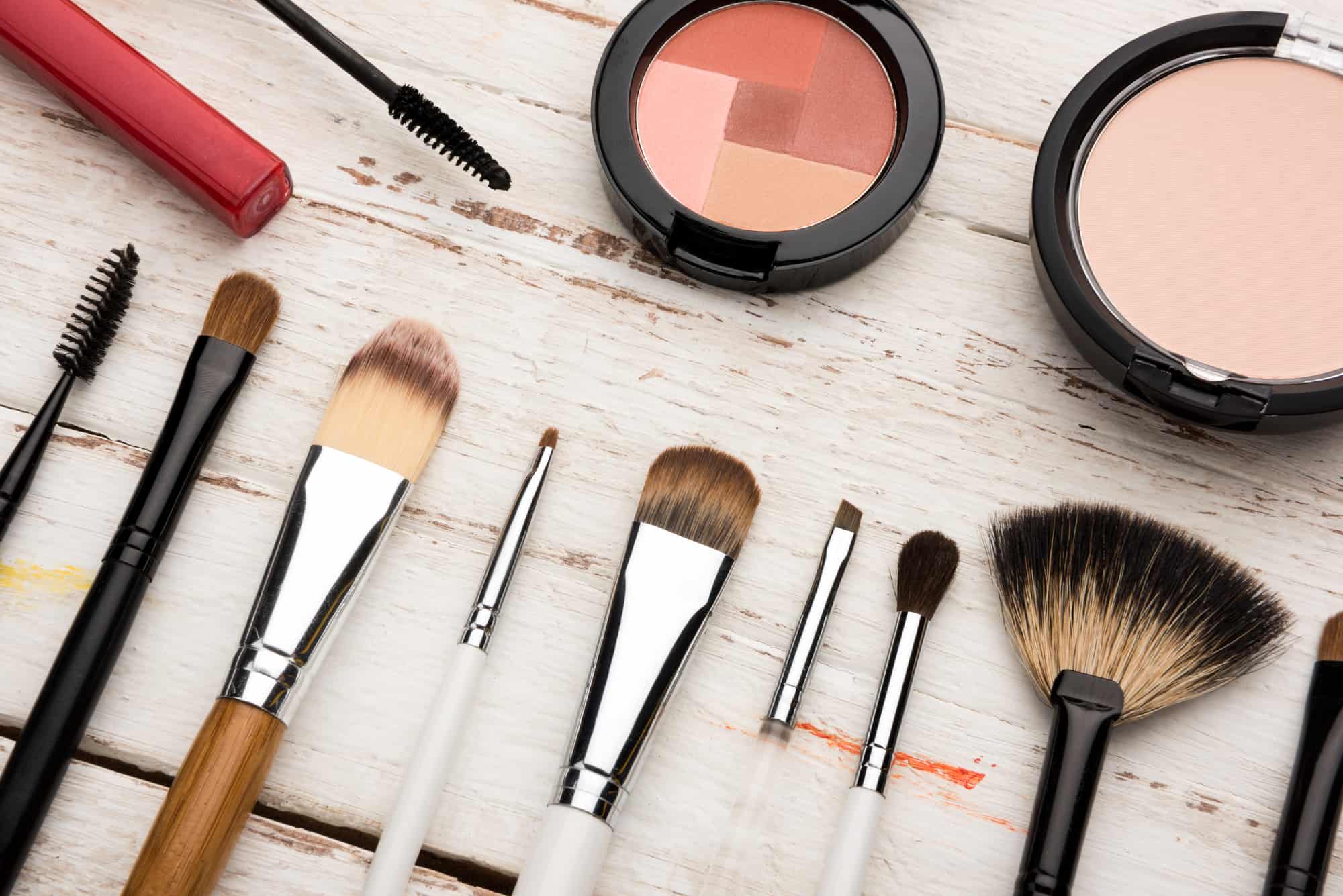
Is There Such a Matter As Clean, Natural Or Safe Makeup? It's Complicated.
During the last few years, the clean/natural beauty industry has been expanding significantly. As this industry is largely unregulated, all of these terms caused much confusion: the words "clean," "natural," "rubber," "non-toxic," and "green" are often used interchangeably. Because the FTC (Federal Trade Commission) and the FDA (Federal Drug Administration) aren't regulating the usage of these words, they're all pretty much meaningless. Sometimes "natural" means plant-based ingredients, but past in big it's adequately nonspecific.
Even more confusing is everyone's favorite word: "organic." In cosmetics, there really is no such thing. The USDA organic seal only applies to agronomics and nutrient, not cosmetics. So when you see the USDA organic seal that'south considering that make has decided to employ food-course organic ingredients inside. Yes, yous tin can literally eat those ingredients. Only I wouldn't recommend it because it volition taste nasty. Just buyer beware, a company can use word "organic" in their marketing without actually having organic ingredients inside. Look for the USDA organic seal to be sure.

NEWS FLASH: Corrective Companies Take Paid Out Millions In Settlements. Buyer Beware!
The cosmetic manufacture has been rife with lawsuits in the past couple of years for skillful reason–harmful chemicals tin can destroy lives.
In 2018, manufacture bigwig Johnson & Johnson was ordered to pay $iv.7 billion dollars to women who'south use of baby powder caused ovarian cancer, which is ane of those cancers that's rarely discovered before it is too late.
Afterward when haircare giant, Wen, settled a 26 1000000 dollar settlement to victims of one of their hair products that was allegedly making people's pilus fall out, we collectively freaked out because that was supposed to be a "natural" brand.
Unfortunately, these are prime examples of what the cosmetic industry is immune to go abroad with daily considering no one is monitoring them.
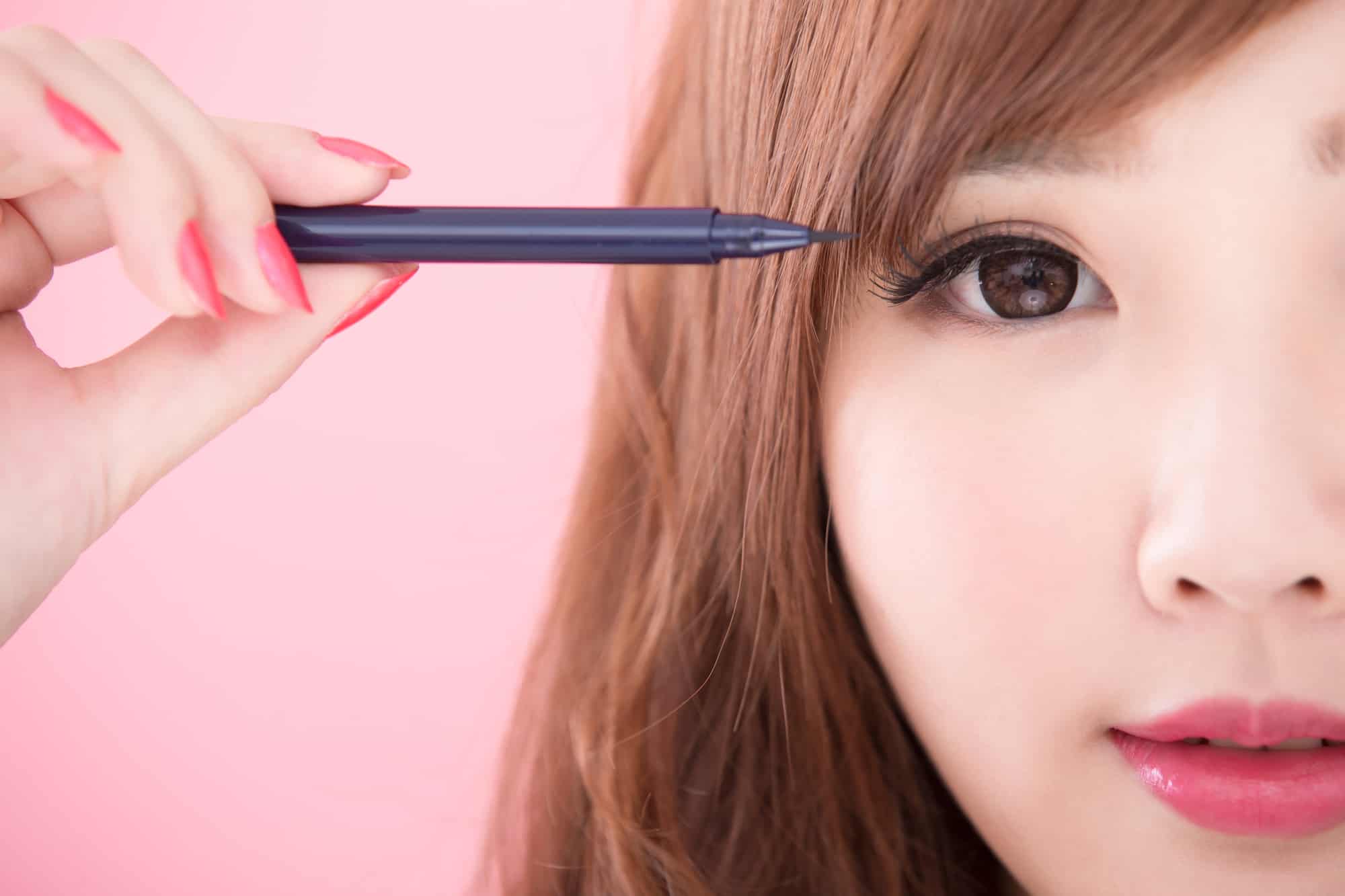
Is Mineral Makeup Really Better For You?
The short answer to that question is no. Mineral makeup has been around since early cavern-dwellers wanted to put ground-upward minerals onto their skin as war paint, for decoration, and perhaps even for cover-up. Unfortunately, minerals mined from the world likewise comprise heavy metals, which means mineral makeup exposes you to heavy metals like lead. And this is actually far more than serious than mineral makeup brands are telling you.
In 2007, the Campaign for Condom Cosmetics released the written report testing 33 brands of lipsticks for atomic number 82 content. 61% of lipsticks contained lead, with levels ranging up to 0.65 ppm. Subsequently, the FDA tested 20 lipsticks and establish atomic number 82 in each one ranging from 0.09 ppm to three.06 ppm with an average of one.07 ppm. So in 2010, the FDA followed up more testing and found lead in 400 lipsticks tested, ranging from 0.026 ppm to vii.nineteen ppm with an boilerplate of 1.eleven ppm.
Then in 2011, the Canadian Environmental Defense tested 49 face up makeup products for the presence of arsenic, cadmium, pb, nickel, beryllium, thallium, mercury, & selenium. seven out of viii products had detectable levels of those heavy metals.
More recently in 2013, the University of California researchers found chromium, cadmium, aluminum, manganese, and lead in all 24 lip glosses and eight lipsticks they tested. Most of the tested lip products independent high concentrations of titanium and aluminum. All examined products had detectable manganese. Simply the biggest culprit was lead detected in 24 products (75%), with an boilerplate concentration of 0.36 ± 0.39 ppm.
Nosotros also establish in this lengthy investigation that several brands of mineral makeup contain many of the harmful ingredients we've been trying to avoid, like antifreeze, titanium dioxide, formaldehyde, mica, and talc.
Mamavation's Green Beauty Guide with 80+ Labs on Indications of PFAS "Forever Chemicals" Final Results
Mamavation tested 83 beauty products from 49 different green beauty cosmetic brands, mostly mascara and lip products. To determine the concentration samples of each product, we took the median result of all samples that had detectable levels. The median exposure level of all detectable results was 30 ppm.
We then identified three exposure levels: anything in a higher place 30 parts-per-one thousand thousand (ppm) we considered high, anything betwixt 10 ppm and 29 ppm nosotros considered medium exposure, and anything beneath 10 ppm was low. Our measurements could detect organic fluorine downwards to 10 ppm, therefore anything lower was beneath the limits of detection of our chemical analysis.
The lab results told us that65% of green beauty products had detectable levels of organic fluorine. Here's the total analysis:
- 65% of greenish beauty cosmetic products tested had detectable levels of organic fluorine, while 35% of products did not have detectable levels.
- Of the products with detectable levels of organic fluorine, the range was from 10 ppm to 865 ppm.
- Of the products with detectable levels of organic fluorine, the median amount was xxx ppm.
- 8 products tested exceeded 100 ppm.
- Lipstick wearers beware — 76% of lip products had detectable levels of organic fluorine. Another exposure hither is beingness kissed by someone else with lipstick that has detectable fluorine.
- 64% of mascara had detectable levels of organic fluorine.
Our interest in reporting and organizing consumer studies on PFAS is to inform consumers. Delight keep in mind this is a snapshot of dark-green beauty makeup products at one point in time. Our study does not represent every lot of every production. Information technology as well will non consistently stand for what the consumer is exposed to based on how the cosmetic formulas separate and pool over time. Then please expect varying levels from product to product and brand to brand.
We used a standardized test that is expert for spot-checking, simply not identifying specific PFAS chemicals. Therefore, what is done for academic research is far more sophisticated and the number of products would be larger. Having said that, this exam is a proficient method to check to encounter if organic fluorine is present in the sample. Organic fluorine likely indicates the presence of PFAS. Notwithstanding, it's possible that other ingredients like fluorinated pharmaceuticals, fluorinated plastics, or fluorinated cleaning product chemicals could cease up in the final upshot.
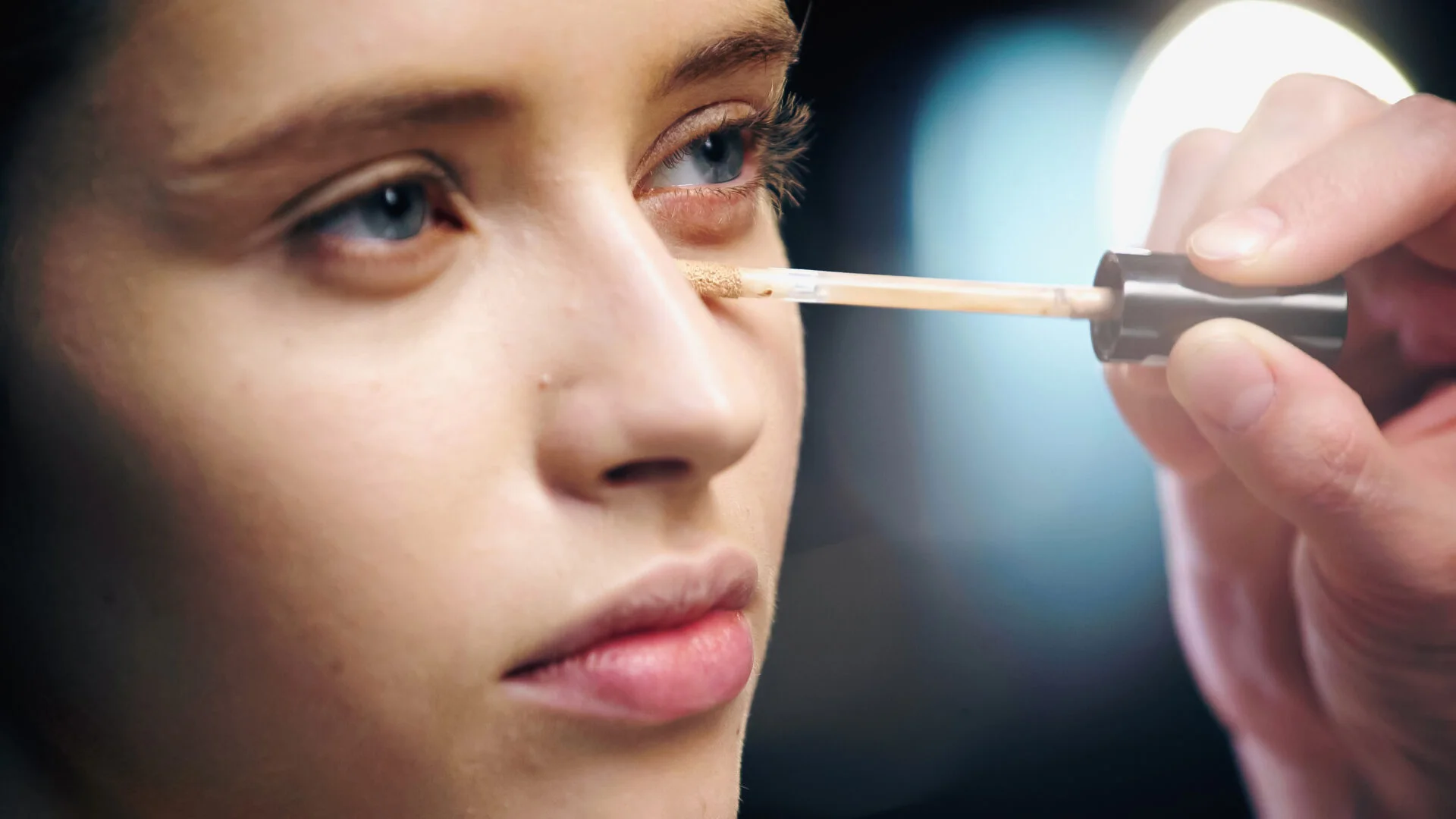
Non Our Favorite Green Beauty Cosmetic Brands with High Levels of PFAS "Forever Chemicals"
In this category, y'all'll detect brands that had medium to loftier fluorine levels. This written report saw a median of 30 ppm so we used that as our rank in this category. We have decided to put any brand with medium levels of fluorine and above in this department. Each brand mentioned below volition haveat least one production tested with over xxx ppm of organic fluorine. However, you lot'll discover that a couple of brands in this department had one other product with non-detectable levels of fluorine and we linked upwards some of those products for yous.
- Axiology: Axiology Lip to Lid Balmie-Watermelon (232 ppm organic fluorine)
- Alima Pure: Alima Pure L Velvet Lipstick – Rouge A Levres Velvet Lips (non-notice) & Alima Pure Natural Definition Mascara (33 ppm organic fluorine)
- Antonym Cosmetics: Antonym Cosmetics Lola Lash Mascara (non-notice) & Antonym Corrective Pare Esteem Foundation Dark (53 ppm organic fluorine)
- Au Naturale: Au Naturale Lip Gloss (52 ppm organic fluorine)
- Burts Bees: Burts Bees All Aflutter Mascara (357 ppm organic fluorine), Burts Bees Nourishing Mascara (357 ppm organic fluorine), Burts Bees Lip Shimmer (36 ppm organic fluorine)
- Clove & Hallow: Clove & Hallow Lip Velvet Liquid Lipstick (865 ppm organic fluorine)
- Littoral Archetype Creations: Coastal Classic Creations Lash Drama Volumizing Mascara (not-find) & Coastal Archetype Cosmos Lipstain (541 ppm organic fluorine)
- Elate Cosmetics: Elate Mascara Essential Mascara (not-detect) & Elate Moisturizing Lip Gloss Radiate (145 ppm organic fluorine)
- Ere Perez: Ere Perez Avocado Waterproof Mascara (54 ppm organic fluorine) & Ere Perez Mango Lip Honey (18 ppm organic fluorine)
- FitGlow Beauty: FitGlow Beauty Lip Color Serum (non-detect) & FitGlow Beauty Vegan Skilful Lash Mascara (37 ppm organic fluorine)
- Gabriel: Gabriel Mascara Blackness (21 ppm organic fluorine) & Gabriel Lip Gloss Ambrosia (37 ppm organic fluorine)
- Hynt Beauty: Hynt Dazzler Mascara (31 ppm organic fluorine) & Hynt Dazzler Aria Pure Lipstick (29 ppm organic fluorine)
- Ilia: Ilia Limitless Lash Mascara (non-detect) & Ilia Balmy Gloss Tinted Lip Oil Saint (35 ppm organic fluorine)
- Juice Beauty: Juice Beauty Phyto Pigments Ultra Natural Mascara (non-detect) & Juice Beauty Phyto Pigments Satin Lip Cream (33 ppm organic fluorine)
- Kosas: Kosas Big Clean Longwear Volumizing Mascara (non-detect) & Kosas Lip Oil Gloss (32 ppm organic fluorine)
- Limelife past Apse: Limelife past Alcove Liquid Lips- Red (535 ppm organic fluorine)
- Mineral Fusion: Mineral Fusion Volumizing Mascara (62 ppm organic fluorine) & Mineral Fusion Lip Gloss (ten ppm organic fluorine)
- Poofy Glam Cosmetics: Poofy Glam HD Mascara (37 ppm organic fluorine)
- PUR: PUR Fully Charged Magnetic Mascara (33 ppm organic fluorine) & PUR Hybrid Lotion CBD Lip & Cheek Balm (89 ppm)
- Pyt Beauty: Pyt Beauty Pump It Up Lip Gloss (non-notice) & Pyt Beauty Swipe Right 12 Hr Mascara (122 ppm organic fluorine)
- TOK Beauty: TOK Beauty Eyes that TOK Lash Enhancing Mascara (non-notice) & TOK Beauty Lip Tonic Kind (76 ppm organic fluorine)
- Young Living (Savvy Minerals): Savvy Minerals past Young Living Wish Lipstick (39 ppm organic fluorine), & Savvy Minerals past Young Living Mascara (29 ppm organic fluorine)
- Zerro & Co: Zerro & Co Mascara (non-detect) & Zerro & Co Lip Balm (58 ppm organic fluorine)
Ameliorate Light-green Beauty Corrective Brands with Lower Levels of PFAS "Forever Chemicals"
These are the greenish beauty products that have low levels of fluorine beneath 30 ppm. Y'all'll notice, we tested i-2 of each brand and at least one of their products tested for detectable organic fluorine below xxx ppm. However, you'll also notice that some of these brands had i product with non-detectable levels of organic fluorine, while another product had detectable levels. Nosotros are still linking upward some of the products that had non-notice levels for you to make them like shooting fish in a barrel to purchase.
- Blank Minerals:Bare Minerals Lashtopia Mega Volume Mascara (19 ppm organic fluorine)
- Bloom Brilliant: Bloom Bright Mascara (21 ppm organic fluorine)
- C'est Moi: C'est Moi Lip Gloss Bliss Color (11 ppm organic fluorine) & C'est Moi Muse Mascara (8 ppm organic fluorine)
- EcoLips: EcoLips Unflavored PlantPod Lip Balm (19 ppm organic fluorine)
- Honest: Honest Extreme Length Mascara (25 ppm organic fluorine)
- Inika Cosmetics: Inika Mascara (13 ppm organic fluorine)
- Josie Maran: Josie Maran Argan Black Oil Mascara (25 ppm organic fluorine) & Josie Maran Argan Infinity Lip & Cheek (not-detect)
- Kari Gran: Kari Gran Lip Whip Suji (26 ppm organic fluorine)
- Kjaer Weis: Kjaer Weis Red Liquid Lips (26 ppm organic fluorine)
- Mad Hippie: Mad Hippie Plum Cheek & Lip Tint (22 ppm organic fluorine)
- Pacifica: Pacifica Aquarian Gaze Water-Resistant Long Lash Mascara (21 ppm organic fluorine)
- Real Purity: Existent Purity Lengthening Mascara (11 ppm organic fluorine)
- Rejuva Minerals:Rejuvena Tint Lip Gloss (14 ppm organic fluorine) & Rejuva Minerals Mascara (20 ppm organic fluorine)
- RMS: RMS Mascara (12 ppm organic fluorine)
- Saie: Saie Mascara Lengthening & Lifting Mascara (non-observe) & Saie Actually Proficient Gloss Sugariness (17 ppm organic fluorine)
- Tarte: Tarte Maneater Mascara (20 ppm organic fluorine)
- Thrive Causemetics: Thrive Causemetics Liquid Lash Extension Mascara (not-detect) & Thrive Causemetics Lipstain (28 ppm organic fluorine)
- Vapour Cosmetics: Vapour Elixir Lip Gloss (10 ppm organic fluorine)
- W3LL People: W3LL People Bioextreme Lip Gloss (18 ppm organic fluorine) & W3LL People Volumizing Mascara (not-detect)
- Westman Atelier: Westman Atelier Eye Love You As well Mascara (not-notice) & Westman Atelier Squeaky Clean Liquid Lip Lotion (19 ppm organic fluorine)
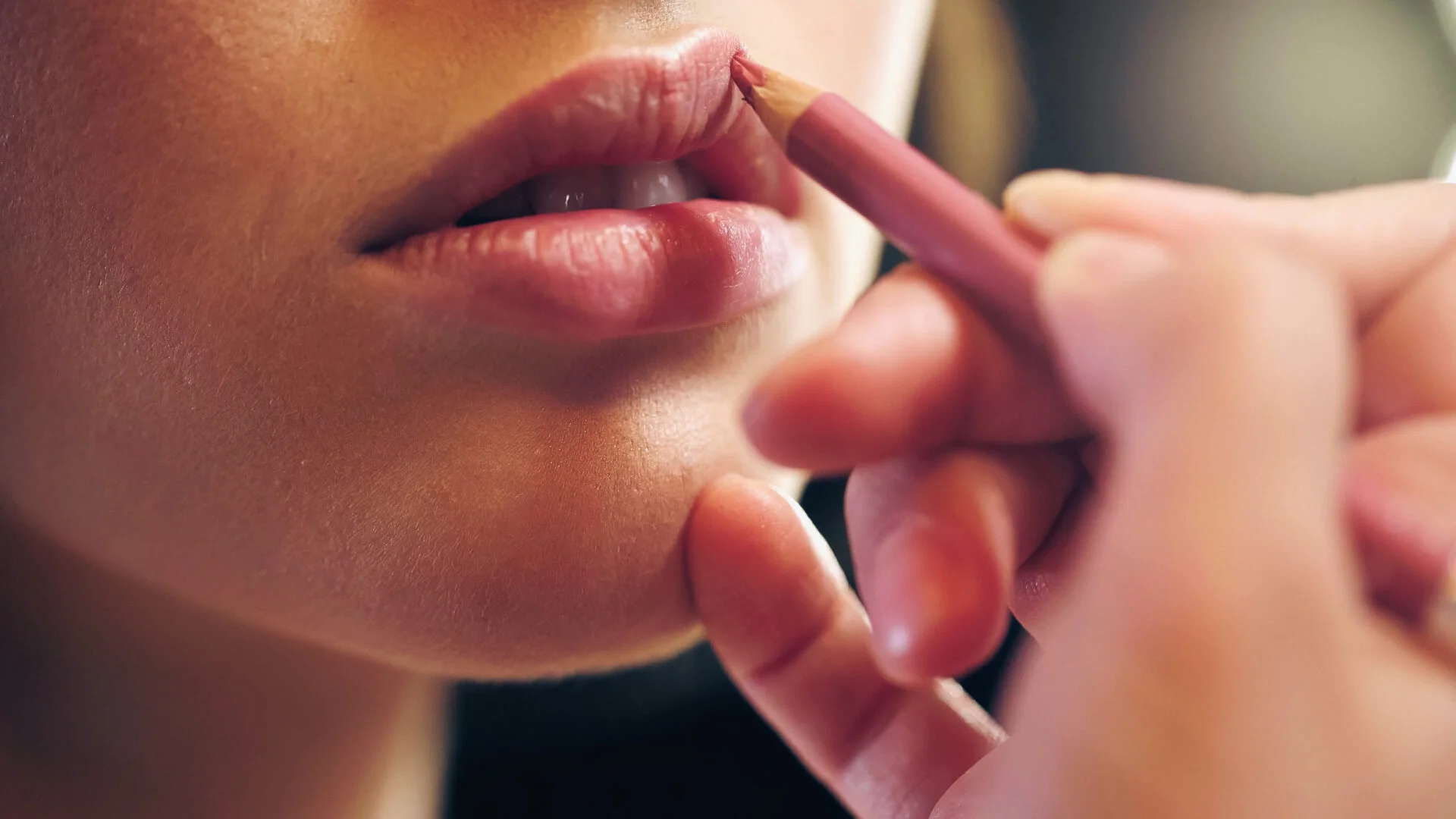
Best Dark-green Beauty Cosmetic Brands Sans PFAS "Forever Chemicals"
These brands did not have detectable fluorine at ten parts per million in the products that were tested. This does not mean that they don't have any PFAS, but it ways that it was not detectable at ten parts per one thousand thousand, which is the standardized test nosotros used for this investigation. In the future, we hope to test downwards to lower levels as those tests & methods become more affordable.
- 100% Pure: 100% Pure Fruit Pigmented Mascara (non-detect), 100% Pure Lip Caramel Lip Gloss (non-detect), & 100% Pure Bamboo Blur Tinted Moisturizer (non-detect)
- Beautycounter: Beautycounter All-n-1 Mascara (non-discover), Beautycounter Beyond Gloss (non-find) & Beautycounter Skin Twin Featherweight Foundation (non-notice)
- Crunchi: Crunchi Shattered Mascara (not-detect), Crunchi Datenight Hydrogloss (non-detect) & Crunchi My Alibi Concealer (non-observe)
- Henne: Henne Luxury Lip Tint – Desire (not-detect)
- Lily Lolo: Lily Lolo Natural Mascara (non-detect)
- Pure Oasis: Pure Oasis Mascara (not-detect), Pure Haven Clear Smooth Lip Gloss (non-detect), & Pure Haven Tinted Moisturizer (non-detect)
What Si The Most Un Healthiest Makeup Product,
Source: https://www.mamavation.com/beauty/safer-cosmetics-investigation-non-toxic-makeup.html
Posted by: phillipsounins85.blogspot.com

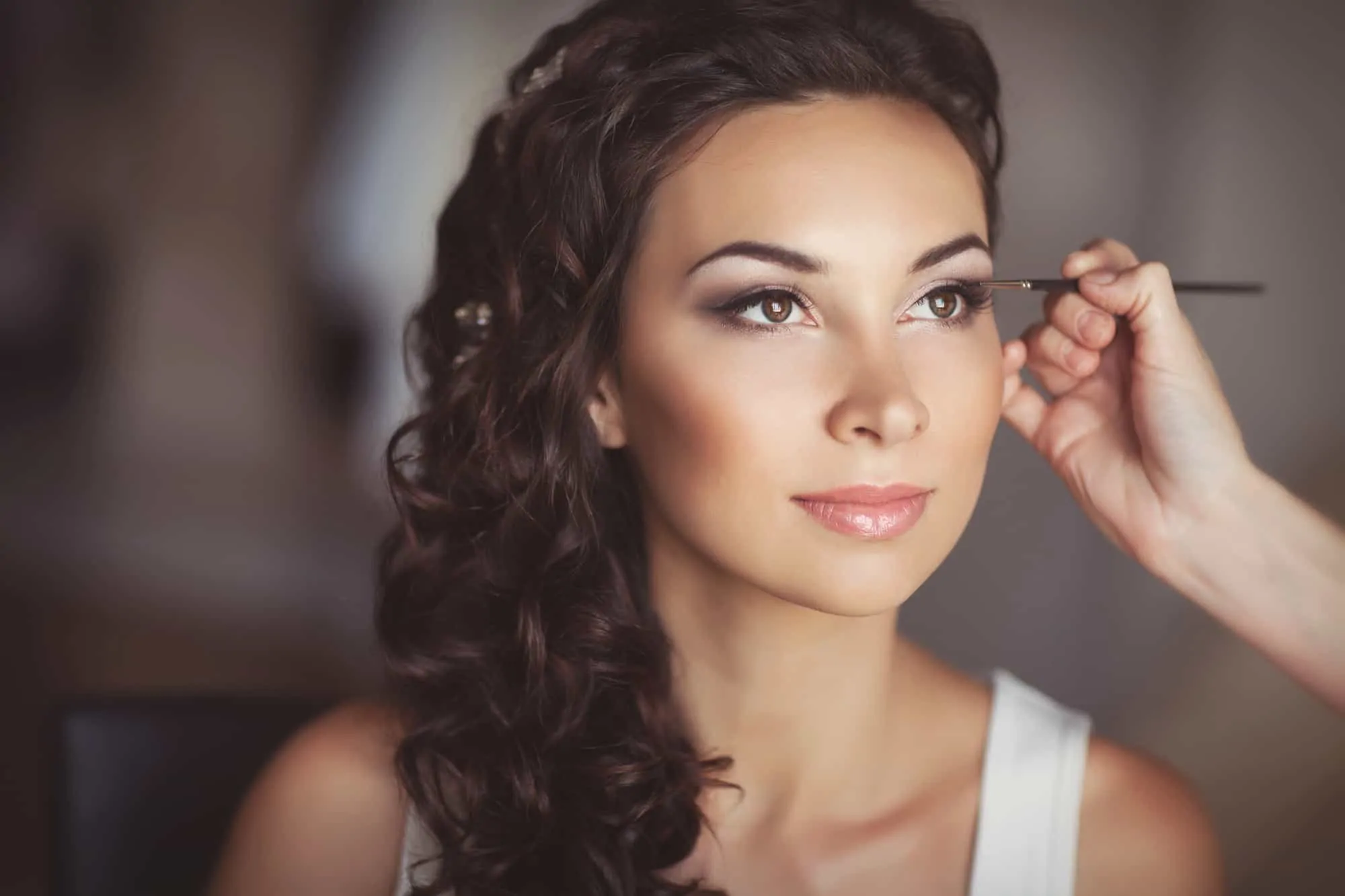
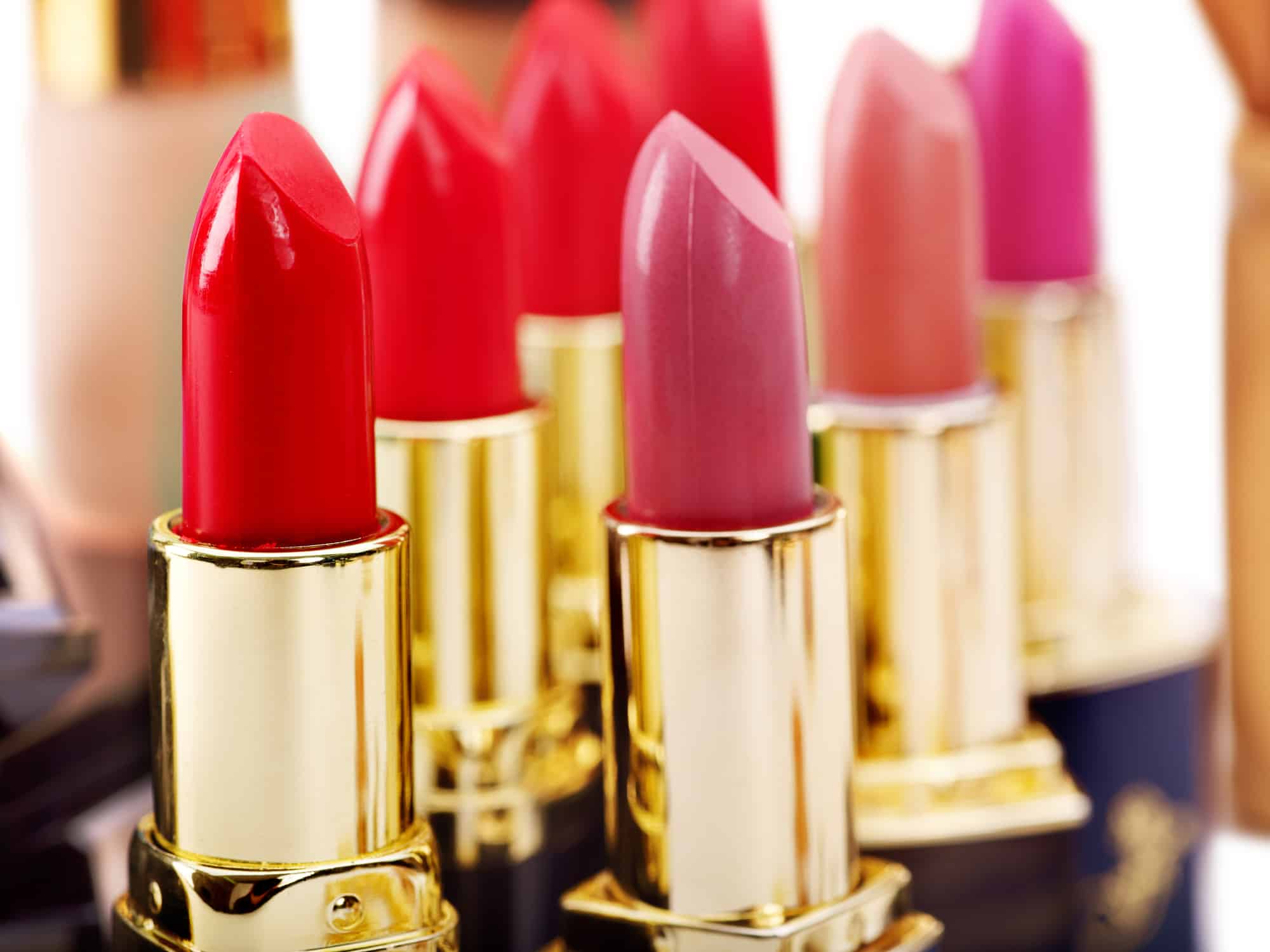



0 Response to "What Si The Most Un Healthiest Makeup Product"
Post a Comment